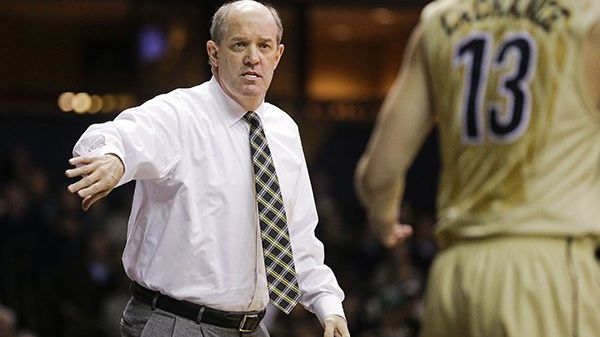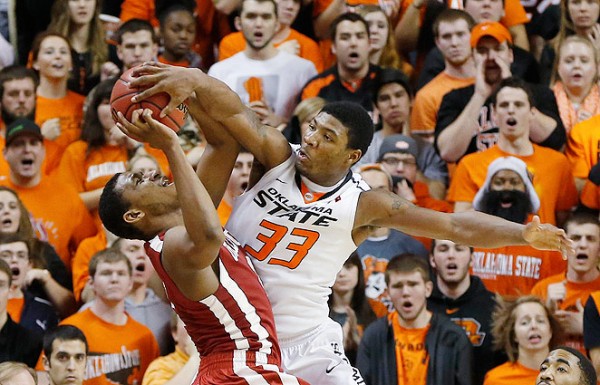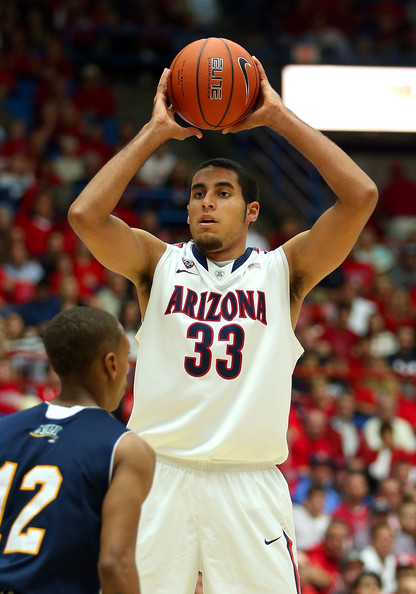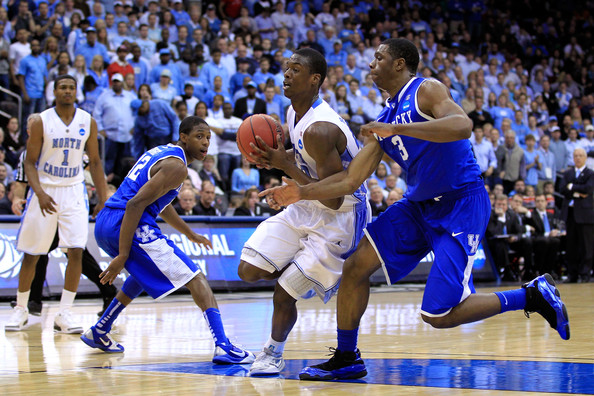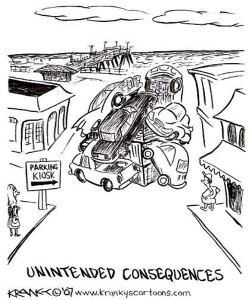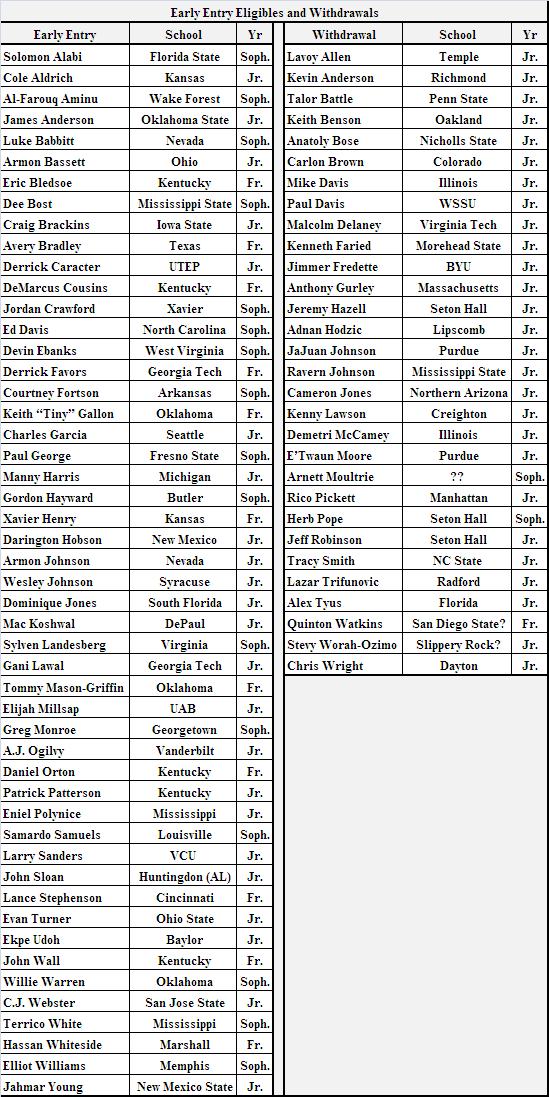Posted by rtmsf on May 5th, 2010
Andrew Murawa is the RTC correspondent for the Pac-10 and Mountain West conferences and an occasional contributor.
Just over a year ago, the NCAA Legislative Committee voted to scale back the amount of time that players who apply for early entry to the NBA Draft have to withdraw their names from the draft and retain their college eligibility, a change that went into effect this season. Where last year undergraduates who had not hired agents had until June 15 to pull back out of the NBA draft, this year the limit for such a decision is May 8, a deadline that, among other things, also conflicts with academic responsibilities (including finals) for many of those 80 U.S. collegiate undergraduates who have declared for the draft. With NBA teams only allowed to begin working out draft prospects beginning on April 29 and with undergraduates needing to come up with a final decision by May 8, many of the benefits of “testing the waters” rule have been eliminated.
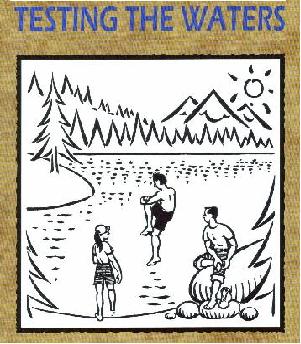
Yes, Let's Make It Harder for Players to Get Informed
The theory behind the rule that allows for undergraduates to declare for the draft and then reconsider and return to school has been that the players will get a chance to work out for NBA teams, talk to general managers and scouts and get a feel for how the NBA perceives their game — what are their strength and weaknesses, what can they work on, and, perhaps most importantly, where they might get drafted. However, with the window for these players to get input from NBA teams reduced to just over a week, players may only get a chance or two to meet with NBA teams, if at all. According to an ESPN poll released last week, of the 19 NBA teams that responded, only two – the Lakers and the Blazers – had any plans to hold workouts for potential draftees prior to the May 8 deadline. And according to BYU head coach Dave Rose, whose star guard Jimmer Fredette is among those still weighing his draft options, “A lot of teams told us they’re going to start working out guys on the ninth of May,” the day after the deadline. Quite simply, for the players among the list of early entrants who have not yet hired agents and who are looking for a little guidance from NBA scouts on their decision, there is little or no help coming.
So, why was this rule even put in place? According to the NCAA, the extension of the deadline into June was “intrusive on academic performance during the spring and increased the potential for outside individuals to have a negative influence on the well-being of student-athletes.” However, for a player like Butler forward Gordon Hayward, who took final exams on Friday, Saturday and Monday, he had exactly four days to gauge the level of interest of NBA scouts. His plans: meet with a couple of agents to figure out the whole process and work out with a trainer in Indianapolis to get a little stronger. For Hayward, he is likely a first-round lock regardless of whether he does or does not work out for any NBA teams, but the point of the rule in the first place is to give guys like him an opportunity to gather as much information as possible in order to make his decision. Giving the kid four days directly after his finals wrap up neither eliminates the potential intrusion on his academics nor decreases outside influences from having a negative impact on his decision. In fact, it would seem that the limit on the amount of interaction that these players have with NBA talent evaluators would be more likely to have a negative impact, giving them less of a realistic look at their NBA chances and perhaps allowing them to fall back on the accolades of less-established talent evaluators (i.e., their family and friends) telling them that they are superstars.

We Thought the NCAA Wants Student-Athletes to Graduate?
The change in the rule began with a recommendation from ACC coaches last year, and coaches are the ones who this rule change benefits the most (although, frankly, it doesn’t really even benefit them much). The theory goes that if coaches can get a definite answer from players on the fence about going to the NBA, they can better plan for the next year, possibly recruiting additional players to take the place of early departees. However, even by May 8, the pickings for coaches that lose players early to the draft are slim at best. At this point, just five of the Scout’s Top 100 recruits for the 2010-11 season are still unsigned (two of whom, Terrence Jones and Luke Cothron have verbal commitments elsewhere, and at least one of the remainders, Kadeem Jack, now appears headed to prep school). Even if a coach gets bad news in late May that an undergraduate will indeed be staying in the draft, they’re not typically going to be able to replace a player with that kind of talent so late in the game. Andy Kennedy, the Ole Miss head coach whose Terrico White is among the early entry candidates, confirmed such a notion, saying “the shortened window isn’t going to help regardless” of whether he remains in the draft or not.
Read the rest of this entry »
| nba draft
| Tagged: butler, byu, dave rose, early entries, gordon hayward, jimmer fredette, kadeem jack, keith benson, louisville, luke cothron, malcolm delaney, oakland, ole miss, samardo samuels, terrence jones, terrico white, virginia tech
Share this story





























